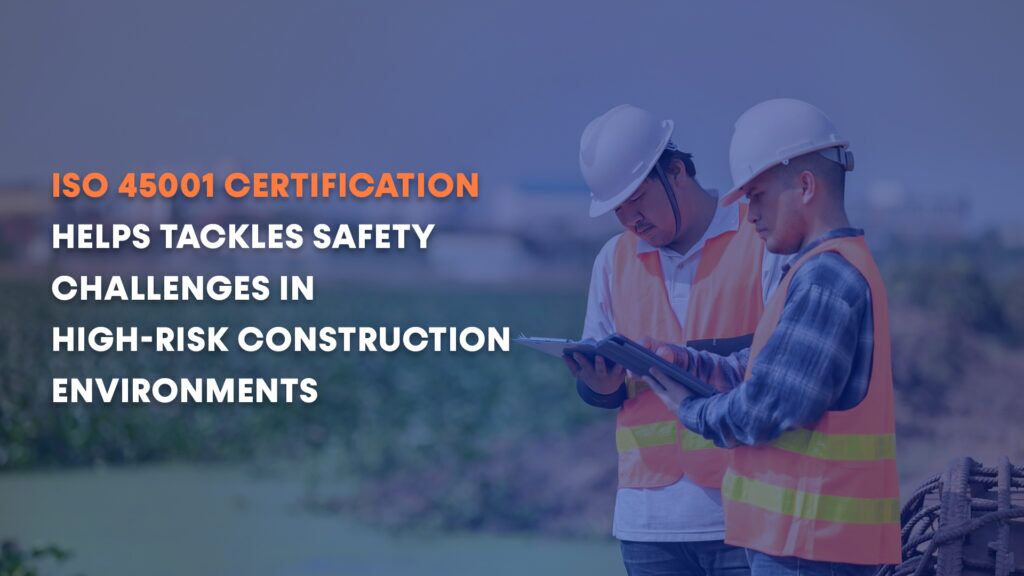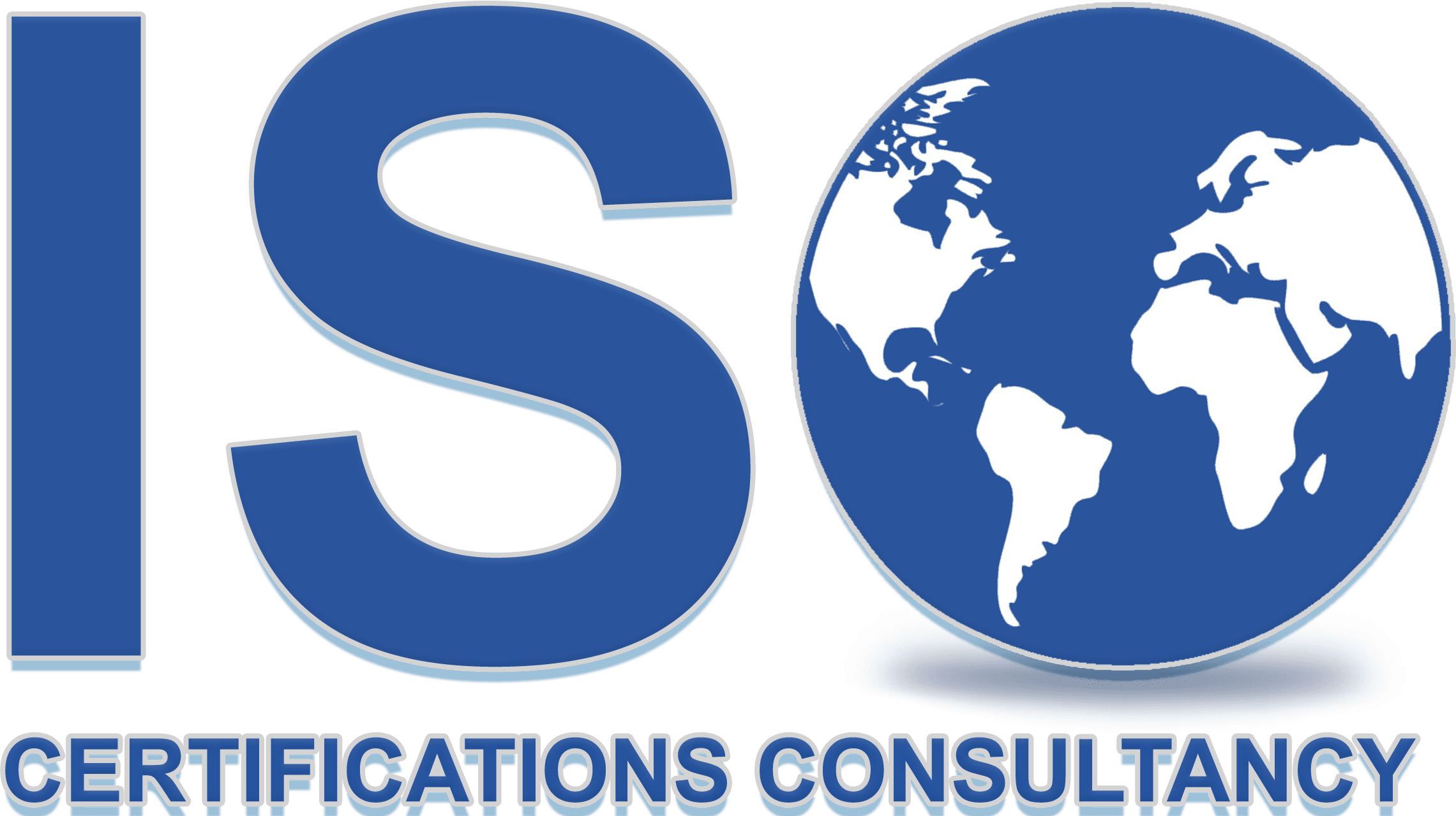
The construction industry is a particularly risky sector globally, with people dealing with dangers like falls, equipment-associated accidents, and exposure to dangerous substances. According to a report by, The International Labour Organization (ILO), it states that construction industry accounts for a tremendous part of workplace accidents and fatalities annually. ISO 45001 certification gives a framework to deal with those challenges, allowing construction businesses to mitigate dangers and create more secure work environments. Challenges in this industry may consist of heavy equipment, elevated workspaces, and unexpectedly changing conditions. Heavy equipment falls from scaffolding, ladders, and rooftops, and complicated safety policies can result in non-compliance and penalties.
How ISO 45001 helps address equipment hazards
ISO 45001`s systematic approach to risk identity and threat assessment is pivotal in handling equipment-associated risks. The standard calls for companies to set up and preserve robust protection protocols to make sure equipment operates properly. By implementing regular equipment inspections and promoting timely repairs, ISO 45001 minimizes the danger of malfunctions. Furthermore, it mandates comprehensive training programs for people, making sure they are professional in operating and working on the heavy equipment and figuring out potential hazards.
A key aspect of ISO 45001 is fostering a culture of responsibility and awareness related to equipment usage. Construction businesses are recommended to implement real-time tracking systems that track equipment performance and become aware of anomalies beforehand. This proactive method substantially reduces the chance of catastrophic system failures, safeguarding people and projects.
In instances of equipment-associated incidents, ISO 45001 emphasizes root cause evaluation and corrective measures to prevent recurrence. This proactive technique, reduces dangers, and fosters a culture of continuous development in system protection. Ensuring that safety measures are well-documented and easily available can enhance compliance and improve best practices throughout teams.
Reducing falls through structured measures
Falls from heights are one of the most urgent safety issues in construction. ISO 45001 gives a clear roadmap to deal with this problem through requiring thorough hazard checks and the implementation of fall safety measures. Construction corporations adopting ISO 45001 are recommended to spend money on top notch fall arrest structures, guardrails, and protection harnesses.
Worker training also plays a vital function in fall prevention under ISO 45001. By instructing workers on the proper use of fall safety equipment and promoting awareness of workplace hazards, businesses can substantially decrease the number of such accidents. For instance, people may be skilled to identify vulnerable factors in scaffolding or recognize incorrect ladder placements, empowering them to proactively mitigate dangers.
The standard additionally emphasizes regular audits and tracking to make sure the effectiveness of implemented protection measures. Companies can leverage technology, including wearable gadgets and sensors, to screen worker actions and detect risky behaviours. These data-driven insights assist refine fall prevention techniques and make sure compliance with protection protocols.
Ensuring compliance with safety regulations
Compliance with protection policies is a primary challenge for construction companies, mainly the ones running throughout multiple jurisdictions. ISO 45001 streamlines this method by having an established method to identifying and meeting legal requirements. The framework encourages companies to maintain meticulous documentation of protection policies, procedures, and compliance efforts.
Regular internal audits and updates to protection protocols make sure ongoing adherence to evolving policies. ISO 45001 certification not only allows corporations avoid legal consequences but also complements their reputation as a safety-conscious company. Clients and stakeholders increasingly choose working with companies that shows a dedication to compliance and employee welfare.
Additionally, ISO 45001 enables the integration of protection control structures with broader organizational processes. By aligning protection goals with business goals, organizations can make sure a seamless approach to compliance. This integration fosters more responsibility and permits for a more comprehensive understanding of ways protection practices effect overall performance.
Transformative benefits of ISO 45001 certification
ISO 45001 gives transformative advantages for construction businesses, addressing protection challenges even as enhancing operational performance. By developing a more secure work environment, companies experience fewer accidents, which interprets to decreased downtime and uninterrupted project timelines. Lower damage costs additionally reduce monetary burdens, along with legal liabilities and insurance claims.
Moreover, ISO 45001 certification serves as a distinctive indicator in a competitive market. It demonstrates a company`s focus on employee safety and well-being, fostering trust amongst clients, partners, and workers. For employees, the implementation of ISO 45001 instills self assurance of their protection, boosting morale and productiveness.
The monetary benefits of ISO 45001 go beyond decreased insurance charges and legal costs. A more secure work environment directly contributes to progressed project performance and decreased delays, ensuing in cost savings. This positive cycle of safety and productivity can position construction businesses as industry leaders devoted to excellence and safety.
Building a culture of safety
Adopting ISO 45001 goes beyond regulatory compliance—it indicates a company`s dedication to cultivating a safety-first culture. By addressing challenges along with system hazards, falls, and regulatory complexities, the standard empowers construction companies to prioritize employee protection without compromising performance.
ISO 45001 fosters a proactive method to protection, in which continuous development and stakeholder involvement are key. Employees at all levels are recommended to take part in protection initiatives, developing a collaborative and inclusive environment. Regular feedback and protection committee conferences can help in identifying potential risks and implement timely solutions. This culture of protection not only protects employees but also strengthens the organization`s reputation and operational resilience.
Furthermore, ISO 45001 emphasizes the psychological components of workplace protection. By making sure that employees sense valued and protected, corporations can enhance job satisfaction and decrease turnover costs. A sturdy protection culture also promotes innovation, as employees are more likely to interact and contribute when they feel secure of their roles.
Conclusion
The construction industry`s high-hazard nature needs a strong and comprehensive method to protection. ISO 45001 certification offers construction businesses with the tools and techniques needed to overcome challenges including system hazards, falls, and regulatory compliance. By adopting this globally recognized standard, businesses can make sure more secure working conditions, enhance operational efficiency, and build a recognition for excellence.
As the industry continues to evolve, ISO 45001 will remain a cornerstone for addressing protection challenges in high-hazard environments. It empowers construction organizations to shield their most valuable asset which is the workforce while using sustainable growth and success. For more information, visit our website.
